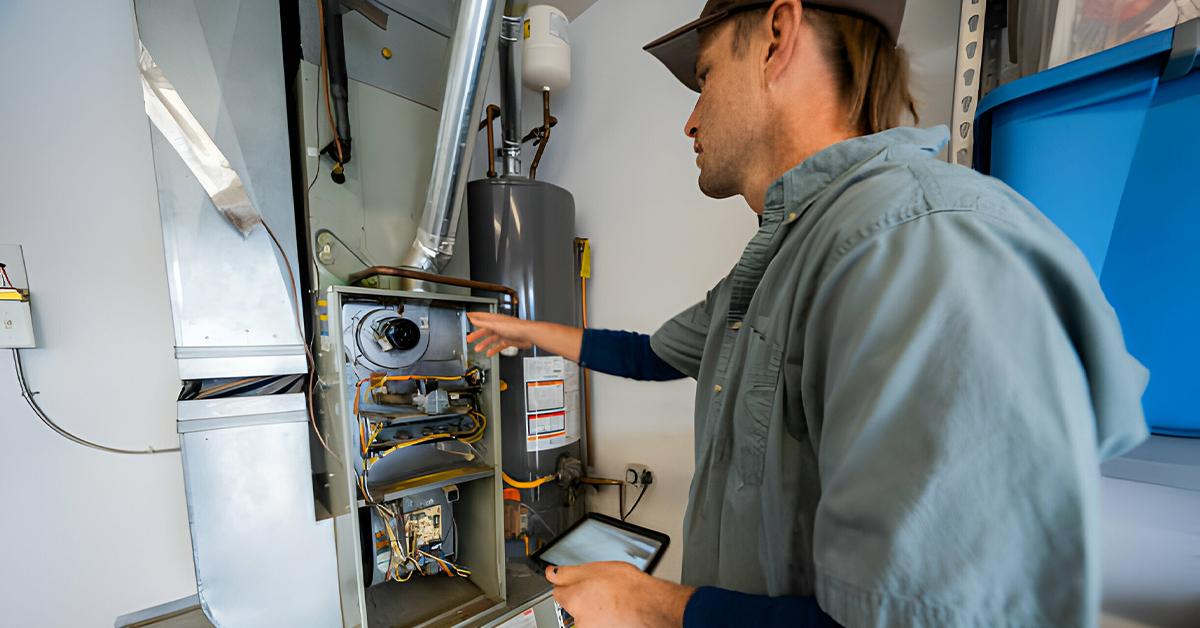Blog


Stay warm and cozy: How to Troubleshoot Common Furnace Issues like a Pro
As the chilly winds start blowing and temperatures drop, the importance of a fully functional furnace in our homes becomes crystal clear. Ensuring a warm and comfortable living space, a furnace is much more than a household appliance; it’s a guardian against the cold. However, when your furnace starts malfunctioning, it can turn your cozy haven into an unwelcoming space. Fear not, as this comprehensive guide will empower you to troubleshoot common furnace issues like a seasoned pro.
Understanding Your Furnace: The Basics
To effectively troubleshoot, you first need to understand the core components of your furnace. Whether gas, electric, or oil, each furnace type functions uniquely but typically includes a heat exchanger, blower motor, filters, thermostat, and, in the case of gas and oil furnaces, a burner. By grasping these basics, you can better diagnose and tackle issues as they arise.
Common Signs of Furnace Problems
Identifying problems early can save you time and money. Common warning signs include unusual noises (such as banging, whistling, or grinding), the presence of a yellow pilot light (indicating possible carbon monoxide issues), frequent cycling (turning on and off), a continuously running blower, and reduced heating efficiency. Recognizing these symptoms can help pinpoint specific issues.
- Thermostat Troubles
Often overlooked, the thermostat can be the root of many heating issues. Ensuring it’s set correctly to ‘heat’ mode and the temperature is high enough is a good starting point. Programmable thermostats might need reprogramming or a battery change. If the settings seem off, consider resetting the thermostat or checking its wiring.
- Checking the Air Filters
Airflow is vital for furnace efficiency, and a dirty air filter is a common barrier. Clogged filters can cause the furnace to overheat and shut down as a safety measure. They can also lead to poor air quality in your home. Checking and replacing your air filters every 3-6 months, depending on usage, is a simple yet effective maintenance task.
- Inspecting the Furnace Flame
For gas and oil furnaces, the flame color is a significant indicator of the system’s health. An ideal, efficient flame is blue. If the flame is yellow, it could signal incomplete combustion, potentially leading to dangerous carbon monoxide levels. Ensure there’s no dust or dirt on the burners, and the flame sensor is clean.
Dealing with Electric Furnace Issues
Electric furnaces might encounter issues such as malfunctioning heating elements, blower problems, or electrical connection issues. If the furnace isn’t heating properly, check if all heating elements are glowing. Resetting the system, checking circuit breakers, and ensuring all connections are secure can often resolve electrical issues.
Gas Furnace Troubleshooting
Gas furnaces require a bit more caution. Common issues include pilot lights that won’t stay lit, a malfunctioning thermocouple, or a gas valve problem. Checking the pilot light and ensuring the gas valve is in the proper position is crucial. If the pilot light won’t stay lit, it could be due to a faulty thermocouple, which may need replacement.
- Oil Furnace Maintenance
For those with oil furnaces, regular maintenance is vital. Ensure the filter and oil levels are adequate and the chimney exhaust is clear. Misalignments or dirt in the nozzles can also cause issues, and the electrodes may need adjustment or cleaning for proper ignition.
When to Call a Professional
There comes a point when professional HVAC Contractors help is needed. If you’ve worked through the basics and the problem persists, or you encounter complex issues like a cracked heat exchanger, it’s time to call a certified technician. Additionally, any suspected gas leaks should be immediately reported to a professional.
Preventative Maintenance Tips
Preventative maintenance is the key to a long-lasting, efficient furnace. This includes scheduling annual professional inspections, keeping vents and ducts clean, ensuring your chimney or exhaust isn’t blocked, and staying on top of filter changes. A well-maintained furnace is less likely to fail unexpectedly and will operate more efficiently.
Safety First: A Word on Carbon Monoxide
Carbon monoxide (CO) safety is paramount. Furnaces can be a source of CO, an odorless and colorless gas that can be deadly. Install CO detectors near your furnace and in sleeping areas, testing them regularly. If you suspect a CO leak, leave your home immediately and call emergency services.
Conclusion
Dealing with furnace issues might seem daunting, but understanding common problems and how to address them can empower you to act confidently. From the basics of thermostat settings to recognizing the signs of a faulty component, you’re now equipped to keep your furnace running efficiently. Remember, while many issues can be handled through DIY methods, there’s no substitute for professional expertise when it comes to complex or hazardous problems. Regular maintenance, prompt attention to issues, and prioritizing safety can ensure that your home remains warm, cozy, and safe throughout the cold season. Here’s to a warm winter, empowered by the knowledge to keep your furnace humming like a well-oiled machine!




